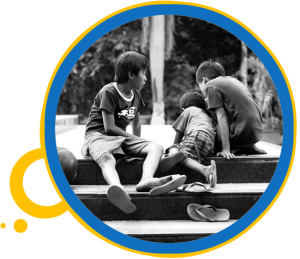Over 11% of all children between the ages of 4 and 17 in the United States have ADHD (Center for Disease Control, 2012).
This represents a 42% increase from 2003 to 2011!
A child’s behavior and attention-span can be affected by many different things at any given time: How much and what they’ve had to eat, how much they’ve slept, who they’re with and more.
So, how do you know if your child’s hyperactivity or inattentiveness falls within accepted norms, or is a symptom of something more serious, such as Attention Deficit Hyperactivity Disorder (ADHD)?
While diagnosis is not always straightforward, there are a few ‘red flags’ that you should be concerned about, as they may be signs your child has ADHD.
Firstly, you should compare your child’s usual energy-level, attentiveness and impulse control with that of their friends and peers of the same age.
Your child’s teacher could be a great resource to get a complete and informed picture of this, especially if they have noticed significant differences in behavior between your child and others in their age group.
It’s important to note that not all children with attention deficit disorder are hyperactive, and that the condition may manifest differently in girls and boys.
The 18 ‘red flags’ that may indicate ADHD
In order to diagnose ADHD, the fifth edition of the American Psychiatric Association’s Diagnostic and Statistical Manual considers 18 core behaviors.
These behaviors are divided into two groups: hyperactivity/impulsivity and inattention.
Hyperactivity and impulsivity
- Does not wait for questions to be fully asked before blurting out an answer
- Frequently moving, even when seated: fidgeting, tapping hands or feet, or squirming
- Habitually jumps into other people’s conversations, games, etc.
- Displays inability to stay seated when expected
- Often has trouble waiting their turn
- Is often in motion, rarely settling down, acting “as if driven by a motor”
- Habitually runs about or climbs at wrong times and in the places
- Can’t stop talking
- Often yells and has trouble with volume control while taking part in leisure activities
SEE RELATED: Can Vision Problems be Misdiagnosed as ADHD?
If your child has been diagnosed, schedule an eye exam with an eye doctor near you to rule out any vision problems.
Inattention
- Often forgets things during the course of daily activities
- Makes careless mistakes or has difficulty paying close attention to details at work or school, or with other activities
- Often loses school materials, books, tools, paperwork, and other things necessary to complete tasks and activities
- Constantly shifting attention between tasks or play activities
- Is often easily distracted
- Can’t seem to organize tasks and activities
- Has a tendency to “zone out,” and has a hard time listening even when spoken to directly
- Habitually finds excuses to avoid or expresses dislike or discomfort with tasks that require extended mental effort, such as schoolwork or homework
- Often gets sidetracked and is unable to follow through on instructions or fails to finish schoolwork or workplace tasks
ADHD diagnosis
In order for a diagnosis of ADHD to be made, a child between 4 and 17 years old must display at least six of these 18 symptoms, and a person over the age of 17 must display five.
The symptoms must be observable in at least two separate settings and these settings can be at home, at school or in social situations.
Symptoms have to cause some kind of disadvantage, must be diagnosed before the age of 12, and must continue for longer than six months. Symptoms that don’t meet these criteria may be signs of something else, such as a learning disability.
If you suspect you or your child have ADHD, consult your healthcare provider today for a full diagnosis.
Could ADHD be an undiagnosed vision problem?
Yes, ADHD may be confused with vision problems.
An ADHD diagnosis may seem obvious if your child is fidgety, hyperactive, or struggles in school. However, these behaviors could be the result of vision problems.
A child may be misdiagnosed with ADHD despite the fact that binocular vision problems may be the root cause of symptoms.
Vision therapy has become an effective treatment program to improve the binocular visual skills of children with ADHD.
LEARN MORE: Vision Therapy for ADHD
Undiagnosed vision problems could lead to a misdiagnosis of ADHD. Schedule an appointment with an eye doctor – it might be the solution you have been looking for.
A child’s behavior and attention-span can be affected by many different things at any given time. Undiagnosed vision problems can also impact a child’s attention.
If your child has signs of ADHD, treatment of a vision problem could be the answer that changes your child’s life.









